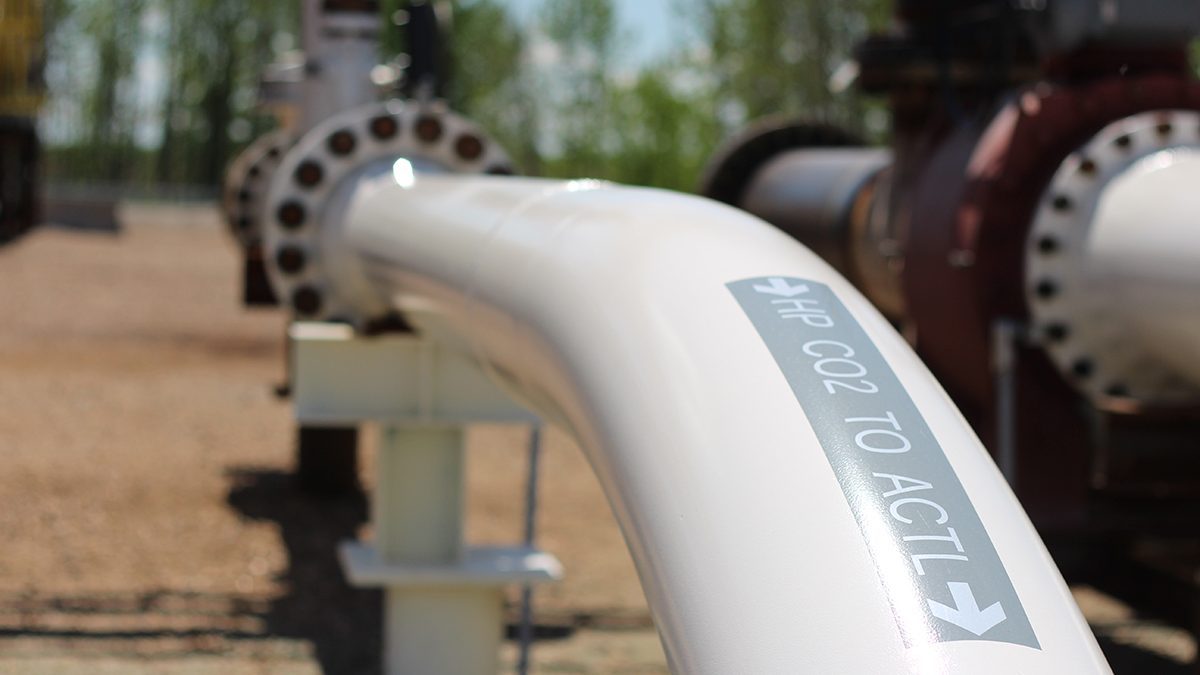The owner of the world’s largest CO2 pipeline is building a key new artery running through the heartland of heavy industry in Alberta.
Wolf Midstream, which owns and operates the Alberta Carbon Trunk Line (ACTL), says construction has commenced on a 40-kilometre pipeline extension through Alberta’s Industrial Heartland northeast of Edmonton, a heavy-industry hub with more than 40 plants that produce fuel, fertilizers, hydrogen, petrochemicals and other products.
“This project is important for two reasons. There are many CO2-emitting facilities already operating and plans for many more to be built and connect to the pipeline,” said Lisa Tebbutt, director for business development at Wolf Midstream, who updated the company’s plans at the Carbon Capture Canada conference in Edmonton on Sept. 13.
“This is further evidence of us actually moving projects forward. We are trying to figure a lot of things out as an industry, but this is an example of getting boots on the ground and building it.”
The expansion will tap into Wolf’s existing 240-kilometre pipeline, which runs from Fort Saskatchewan to the Red Deer region, delivering captured CO2 to permanent deep underground storage.
The trunk line, which started operating in 2020, delivers 4,500 tonnes of CO2 daily and more than 1.5 million tonnes annually from two sources – the NWR Sturgeon Refinery and the Nutrien fertilizer plant – to an enhanced oil recovery project operated by Enhance Energy.
More than four million tonnes of CO2 have been sequestered as of July 2023, Enhance says. That’s the equivalent of removing more than 890,000 internal combustion engine vehicles from the road.
The new ACTL Edmonton Connector will add the $1.6 billion new net zero hydrogen energy complex being built by multinational industrial giant Air Products to the system.
Once completed, the expansion pipeline will have the capacity to handle approximately seven million metric tonnes of CO2 annually.
ACTL is the world’s only operating carbon capture, utilization and storage (CCUS) hub, according to S&P Global Commodity Insights.
There are approximately 15 CCUS hubs globally under various stages of development, with many more being planned, according to McKinsey & Company. Analysts say hubs are important because they can reduce CCUS costs and investment risk.
Tebbutt believes more industrial operations in Alberta will come to see CCUS access in the same light as roads, utilities and other essential infrastructure when making decisions on where to build new facilities in coming years.
“As an operating pipeline, ACTL can take the guesswork out of transporting CO2 to permanent storage in the event a facility wants to capture it,” she says.
“It is becoming a screening criterion for facilities when they look for a place to locate. They look for power, utilities and now CO2 infrastructure.
“As the CCUS industry starts to mature, it will be really important for facilities to have access to geographical and geological diversity of storage. Connecting to ACTL can provide that.”
The unaltered reproduction of this content is free of charge with attribution to Canadian Energy Centre Ltd.
